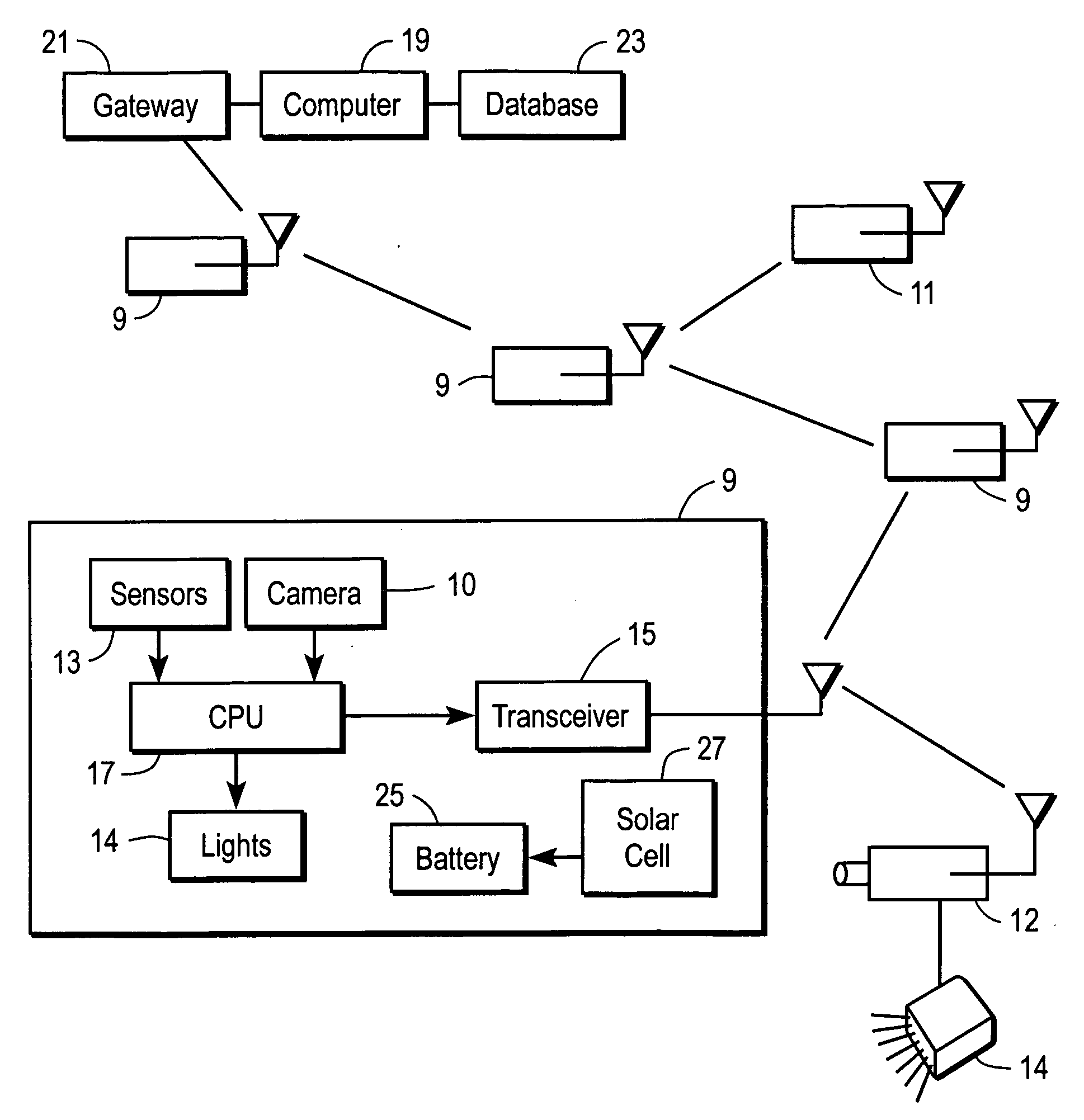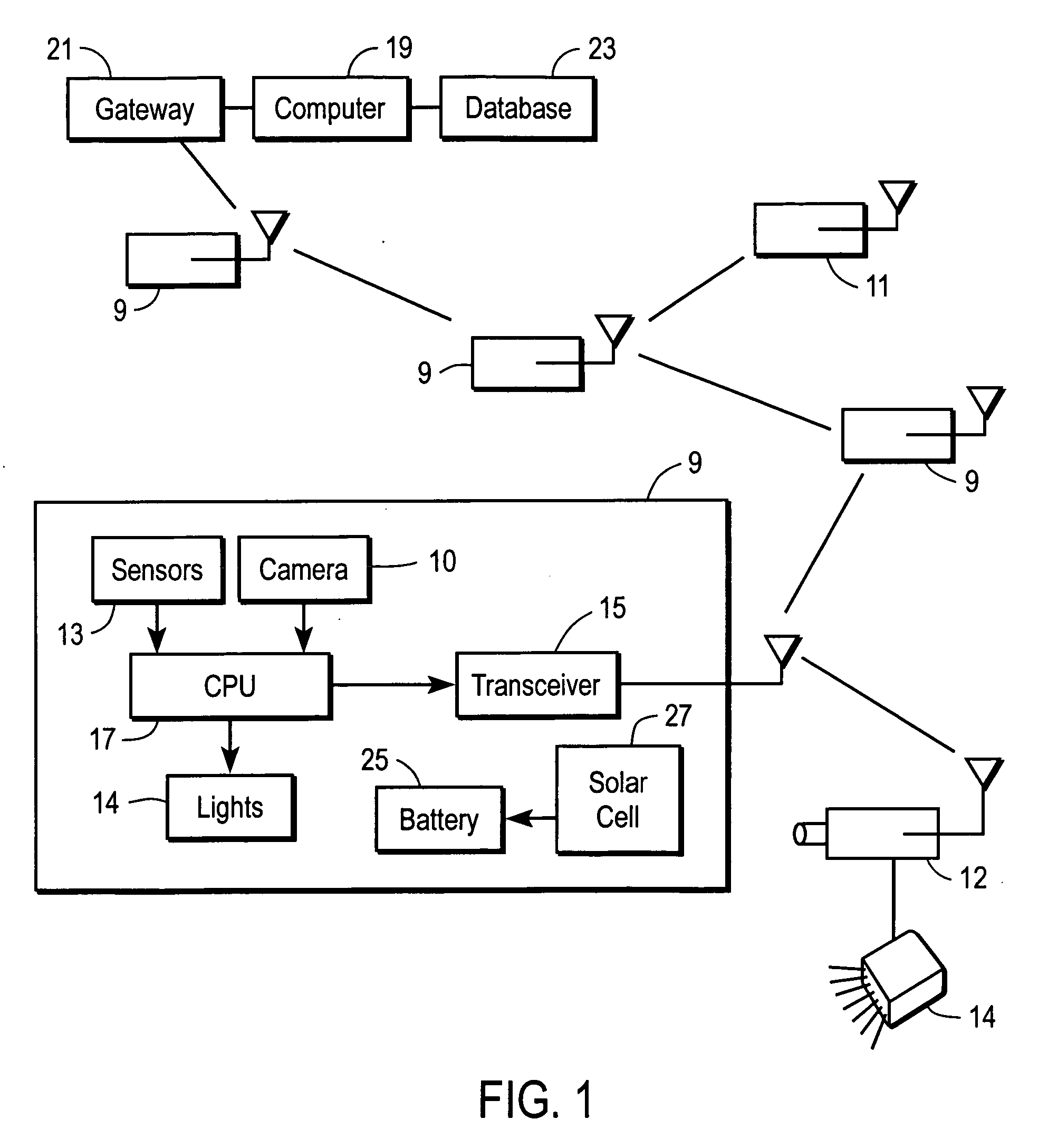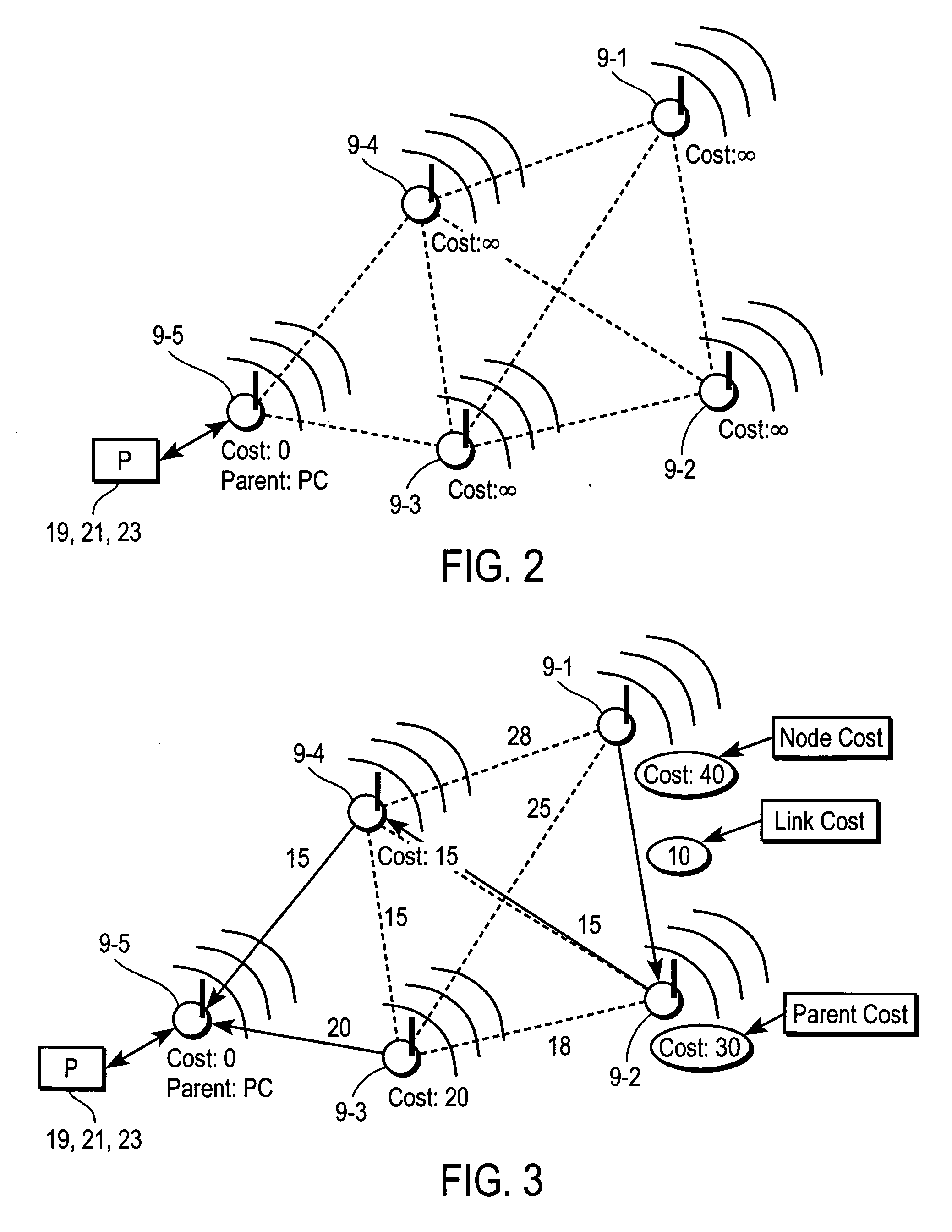Adaptive network and method
a technology of adaptive network and network array, applied in the field of adaptive network, can solve the problems of inability to facilitate nighttime surveillance with more expensive night vision equipment, inhibit rapid reconfiguration, and high cost of video camera and lighting installation, so as to facilitate the re-structuring of perimeter sensors and promote rapid coordinate positioning.
- Summary
- Abstract
- Description
- Claims
- Application Information
AI Technical Summary
Benefits of technology
Problems solved by technology
Method used
Image
Examples
Embodiment Construction
[0026] Referring now to FIG. 1, there is shown a plurality of individual sensor modules 9 deployed at spaced locations, for example, along a peripheral boundary of an area to be secured. Of course, additional sensor modules 11 may be deployed along pathways or entryways or other locations within the area to be secured in order to monitor traffic or other activities.
[0027] Each sensor module 9, 11 includes a proximity sensor 13 that may be, for example, a passive infrared sensor that responds to the presence or proximity of a warm object such as an individual, vehicle, or the like. Alternatively, the proximity sensor 13 may be an active infrared or radio or ultrasonic sensor that emits a signal and senses any echo attributable to presence of a reflective object within a sensing field of view. Of course, other sensors such as vibration detectors or light detectors may be used to respond to the presence of an intruding object.
[0028] In addition, each sensor module 9 includes a transc...
PUM
 Login to View More
Login to View More Abstract
Description
Claims
Application Information
 Login to View More
Login to View More - R&D
- Intellectual Property
- Life Sciences
- Materials
- Tech Scout
- Unparalleled Data Quality
- Higher Quality Content
- 60% Fewer Hallucinations
Browse by: Latest US Patents, China's latest patents, Technical Efficacy Thesaurus, Application Domain, Technology Topic, Popular Technical Reports.
© 2025 PatSnap. All rights reserved.Legal|Privacy policy|Modern Slavery Act Transparency Statement|Sitemap|About US| Contact US: help@patsnap.com



